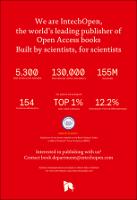Chapter Robust GNSS Positioning in Urban Environment
Abstract
In the past years, global navigation satellite systems (GNSS) have gained the core position concerning the geolocalization applications and services in urban environments. The major issue of the GNSS-based urban application expansion is related to the positioning service quality assurance, expressed in terms of accuracy, integrity, availability, and continuity of the localization service. The dense urban environments, such as city centers, are challenging to the GNSS signal reception causing the frequent blockage of the line-of-sight (LOS) signals and the multipath phenomenon, referred to as the reception of the diffracted/reflected echoes of the transmitted signal. These effects severely affect the pseudo-range and Doppler measurements, used by a GNSS receiver for the user’s position computation, which will further induce the computation of an erroneous positioning solution by the navigation processor down to a positioning loss in the presence of limited satellite visibility and few provided measurements. Therefore, advanced signal processing techniques do represent viable solutions aiming at the mitigation of these undesired effects in order to foster the accuracy and availability of the localization solution. This chapter will address in details the GNSS vector tracking (VT) receiver’s configuration able to cope with the urban environment-induced effects.
Keywords
GNSS, extended Kalman filter, vector tracking, multipath, NLOS, correlatorsDOI
10.5772/intechopen.80412Publisher
InTechOpenPublisher website
https://www.intechopen.com/Publication date and place
2019Classification
Geographical information systems, geodata and remote sensing


 Download
Download